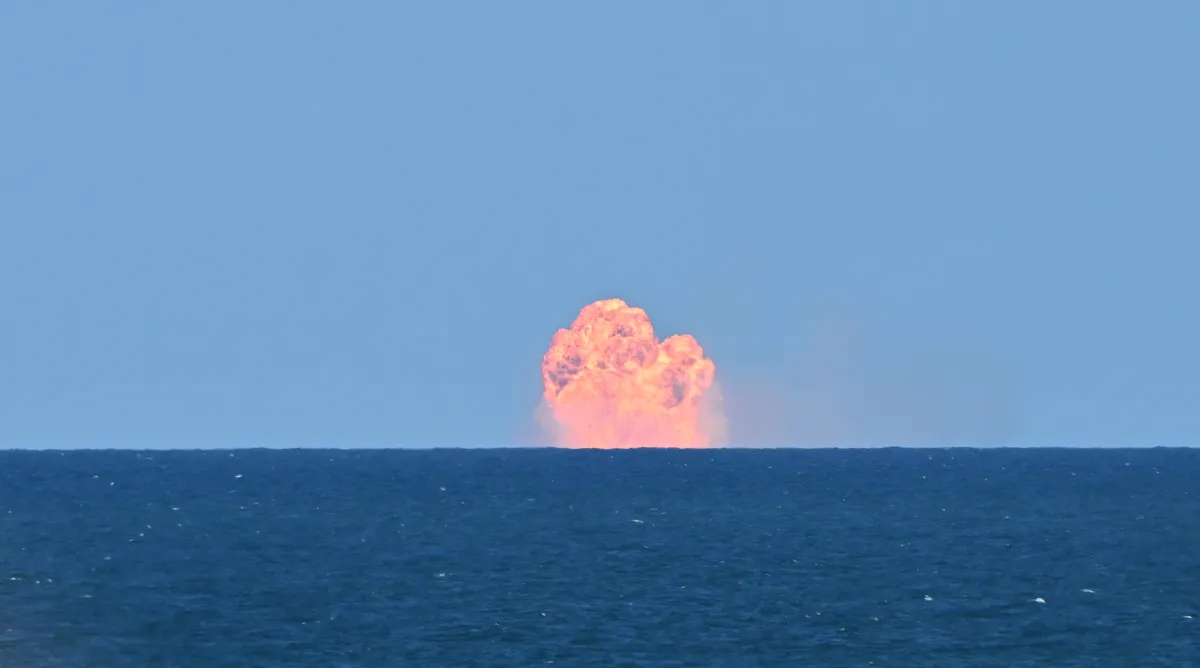
On a muggy evening in January, Alizee Zimmermann and her husband were rinsing off their dive gear when the sky erupted with a dazzling display of fireballs. “We saw the trails as it started to lose control,” Zimmermann recounted. “Then we heard the booms.” This dramatic event marked the premature end of SpaceX’s seventh test flight of its Starship rocket, scattering debris across the beautiful Turks and Caicos Islands. Air traffic controllers quickly diverted numerous flights to avoid the superheated remains of the launch vehicle.
In the aftermath of the chaotic event, volunteers from the Turks & Caicos Reef Fund gathered to document over 100 pounds of debris that washed ashore. “People are very upset about it,” said Zimmermann, the executive director of the organization. “It's all over the beaches and in the seagrasses now.” Just seven weeks later, SpaceX faced another explosive failure during its eighth test flight, with debris visible from nearby regions including the Bahamas and Jamaica. Fortunately, there were no reported injuries or property damage as the rocket disintegrated over the Atlantic Ocean.
These incidents underscore a critical but often overlooked issue: the environmental impact of increased rocket launches. “Human activity in space is ubiquitous enough that it really is starting to have a significant environmental impact,” stated Jonathan McDowell, an astrophysicist at Harvard’s Smithsonian Astrophysical Observatory. As more rockets launch into space, the debris that falls back to Earth poses a growing risk to our planet.
Following the catastrophic Starship test flights, SpaceX released statements asserting, “there were no hazardous materials present in the debris and no significant impacts expected to occur to marine species or water quality.” However, the effects of space debris on marine environments remain largely unstudied, as noted by Britta Baechler, director of ocean plastics research at Ocean Conservancy. A 2017 study from New Zealand highlighted that contaminants and disturbances to marine life from launch debris are major environmental concerns.
Since the launch of Sputnik in 1957, humanity has accumulated a staggering amount of space junk, including defunct satellites and spent rocket stages. Currently, there are over 35,000 tracked objects orbiting Earth, traveling at speeds of around 17,000 miles per hour, according to the European Space Agency. The number of launches continues to rise, with over 2,800 objects sent into space in 2024 alone, breaking previous records.
This growing volume of space junk not only complicates space exploration but also poses risks to our planet. While smaller debris typically burns up upon reentry, larger fragments can survive and land on Earth. Historically, spacecraft have been intentionally disposed of in the oceans, with locations like the Spacecraft Cemetery in the South Pacific serving as a graveyard for old satellites and space stations.
Scheduled re-entries over oceans do not always go smoothly. In 1979, NASA's attempt to crash the Skylab space station into the Indian Ocean resulted in debris scattering over Australia. Researchers now estimate a 10 percent chance that someone could be killed by falling space debris within the next decade. “As the rate of space traffic increases, the risk increases,” warned McDowell.
When rockets explode during flight, such as in the recent SpaceX failures, predicting the debris field becomes a difficult task. “The manner in which we're conducting space operations, with failures that spread debris in populated areas, is a concern,” said Moriba Jah, an astrodynamicist and space environmentalist. “We let mother nature figure it out, and it’s challenging to predict her behavior.”
Addressing the issue of space debris requires innovative solutions, including proposals for debris-capturing harpoons and orbital street sweepers. However, the most effective strategy remains encouraging countries and companies to adopt sustainable practices. This includes choosing controlled reentry for defunct objects and limiting the number of satellites launched into orbit.
The challenge lies in the profit-driven culture that has emerged within the space industry. Jah emphasizes that space debris should be viewed as a waste management issue rather than merely a business concern: “Orbital space should be regarded as a finite resource that requires constant preservation.”
Regulating space debris is complex. The Outer Space Treaty, established in the 1960s, holds countries liable for damage caused by their space objects and urges them to prevent harmful contamination of space. However, enforcement remains an issue, as there is no international body dedicated to this task. “The United States government would be liable for anything that Elon Musk is doing,” Jah pointed out, highlighting the need for cohesive international regulations.
As the U.S. leads in space launches, the actions of the Federal Aviation Administration (FAA) regarding environmental risks will likely influence other nations. While SpaceX has agreed to environmental conditions set by the FAA, Musk has publicly criticized the agency for being overly cautious, claiming it stifles exploration. “The fundamental problem is that humanity will forever be confined to Earth unless there is radical reform at the FAA!” Musk tweeted last year.
As SpaceX continues its ambitious launch schedule, concerns about environmental impacts and the management of space debris persist. Investigations into SpaceX's operations have revealed multiple incidents causing environmental damage, with the FAA closing an investigation into one of the test flights while keeping another ongoing. The path forward must prioritize sustainable practices to ensure that space exploration does not come at the cost of Earth's environment.